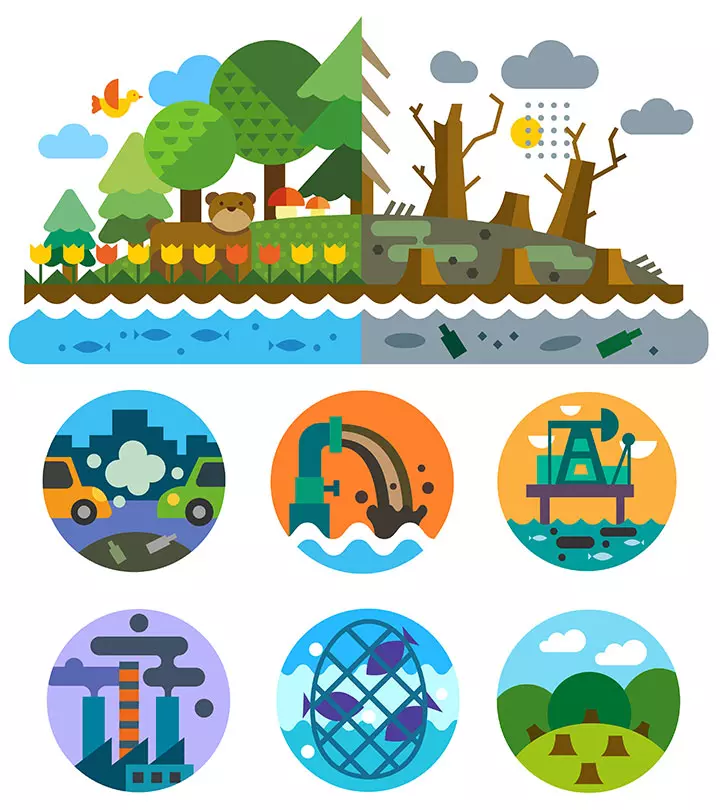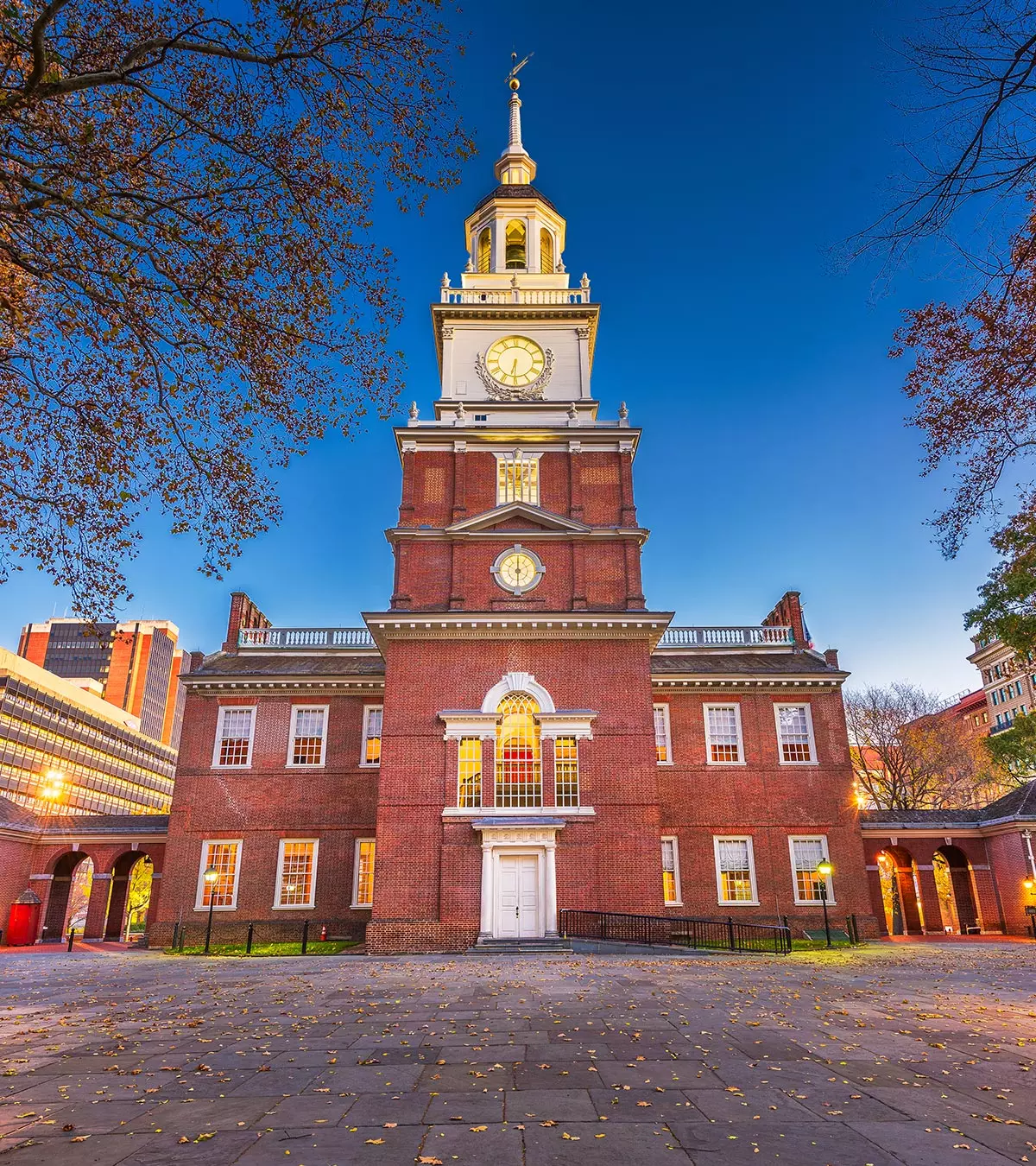
Image: ShutterStock
Information and facts about the solar system can generate interest and excitement for kids.

In ancient days, people used to study the stars and the associated astronomical bodies with other animals, objects, and mythical gods. Those people used to believe that everything revolves around the Earth. They used the term “planetes” for the celestialiObjects or phenomena of the outer space. bodies, a Greek term that means wanderers (1). With more research, it is now known that everything, including all the comets, meteors, asteroids, planets, dwarf planets, and the moon — orbit or spin around the sun. If you are looking for an interesting and easy way to teach your children about the solar system, you can try introducing it to them through songs or videos. Mother of three Charina Rasing tried it, and it worked for her children. She says, “There are tons of songs and videos suitable for younger kids that teach about the solar system. My toddler came across the song ‘The Planet Song for Kids’… and it became our family theme song for a while. The song has a very simple melody for kids to follow, but the lyrics are factual with a lot of ‘fun’ sprinkled in there (i).”
Once your kids are interested, you can throw tidbits about the solar system into the conversation occasionally. Dive into this post for some fascinating facts about these stellar bodies in our solar system.
Key Pointers
- Teach your kids about the fancy celestial system with fun facts, as this will help them remember information better.
- The solar system consists of eight planets, and discovery is a never-ending process.
- The system was formed billions of years ago, and only Earth is known to support life so far.
Planets In Our Solar System
Our solar system comprises the sun, eight planets and their moons, dwarf planets, comets, and asteroids, all orbiting in a gravitational balance. While some planets are filled with gasses, others have rocky surfaces. Scientists are discovering new things about the planets and the solar system daily.
Let us first discuss what exactly these planets are, including the one you are currently living on.
According to the International Astronomical Union, a planet should fulfill these three criteria (2).
- Orbit around the Sun
- Have sufficient mass or be large enough so that its self-gravity molds it into a spherical shape
- Have a free orbit without other small objects
Mercury, Venus, Earth, and Mars are the four small, rocky planets nearest to the Sun.
After Mars, there appears an asteroid belt, a large area filled with millions and millions of rock-like objects. These rocks are nothing but leftover particles from the formation of planets, around 4.5 billion years ago (3). They provide insights into the condition of the early solar system and the planet formation process.
On the other side of this asteroid belt are four massive, gaseous planets, namely Jupiter, Saturn, Uranus, and Neptune (3).
Let us learn about each planet of our solar system in detail ( (4), (5), (6), (7), (8), (9), (10), (11)).
- Mercury: It is the smallest planet in our solar system and closest to the Sun. However, it is not the hottest. It has no atmosphere and no moons, and the solid surface is covered with craters.
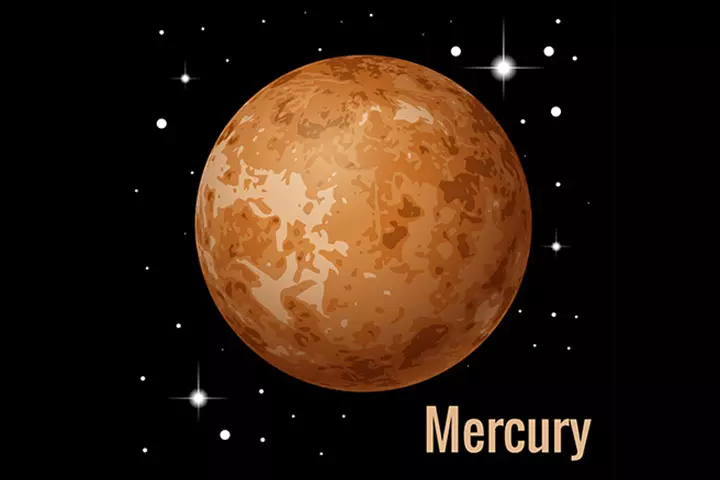
- Venus: Although Venus is not the closest planet to the Sun, it is the hottest. Its atmosphere is full of clouds of sulphuric acid, greenhouse gassesiA type of gas that absorbs infrared radiation and contributes to global warming. , and carbon dioxide, which keep this planet very warm.
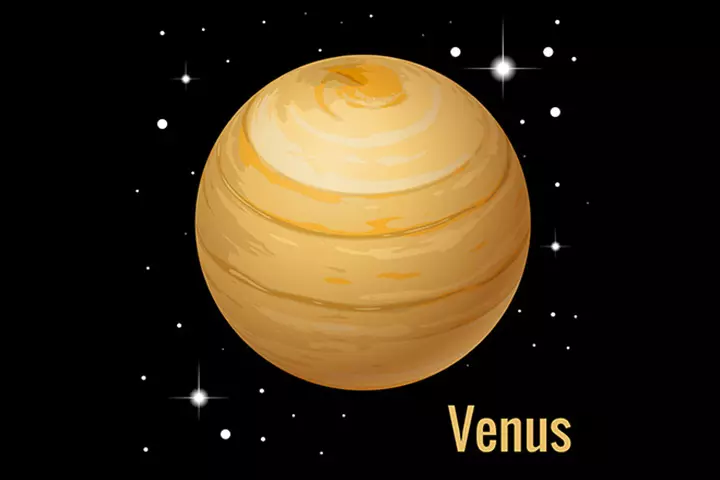
- Earth: Earth is special because it is the only planet that supports life. It is also known as an ocean planet, as approximately 71% of the Earth’s surface is covered with water. An interesting fact about the Earth for kids is that the planet’s atmosphere primarily consists of nitrogen and oxygen.
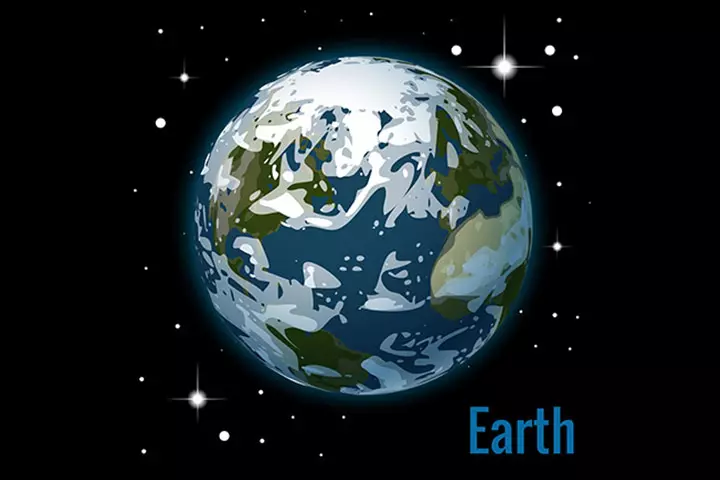
- Mars: Half the Earth’s size, this planet is also called the Red Planet because of the presence of iron on its surface. It is similar to Earth in many aspects as it has seasons, polar ice caps, and volcanoes.
 Quick fact
Quick fact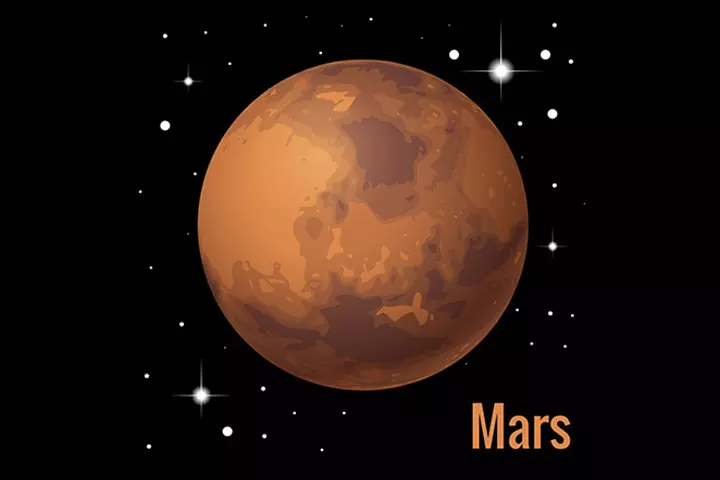
- Jupiter: It is the biggest planet in the solar system. Covered in swirling clouds, it is similar to a star. This planet has no solid surface and is a big gas giant.

- Saturn: It has the most spectacular rings made of ice and rock particles. Like Jupiter, it is also a gas giant made of hydrogen and helium. Saturn can be viewed without advanced telescopes.
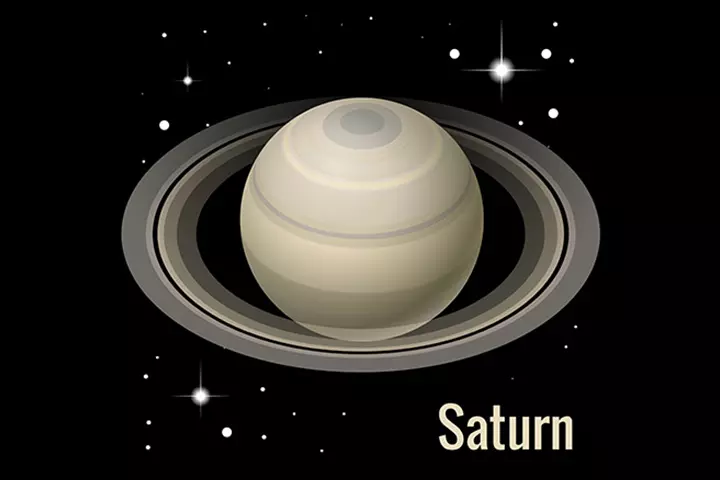
- Uranus: Uranus has a small, rocky center, and the atmosphere is filled with hydrogen, helium, and methane. It appears blue due to the presence of methane. It rotates on its sides, unlike other planets.

- Neptune: The last planet in the solar system, it is very dark, cold, and windy. It is similar to Uranus and is made up of ammonia and methane. Its atmosphere is filled with hydrogen, helium, and methane.

Are you wondering about Pluto? In 2006, Pluto was declared a dwarf planet (3). It is too small to be considered a planet in our solar system.
Interestingly, astronomers are now aware of many other solar systems and are discovering newer ones too. A group of researchers also believe that these planets may support alien life!
30 Amazing Facts About The Solar System
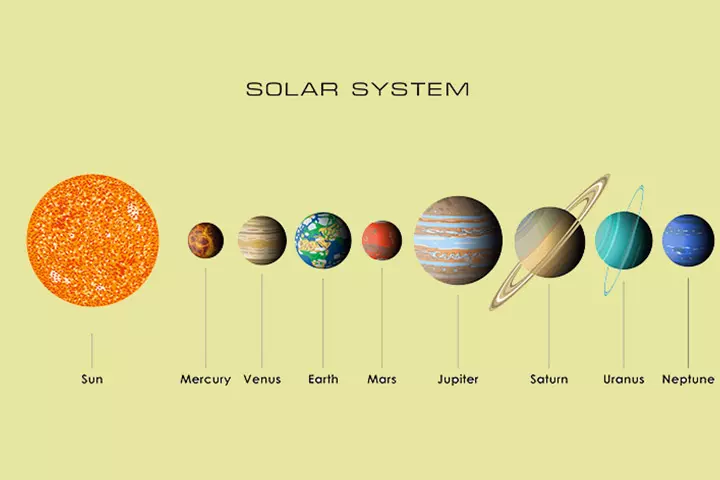
Let us explore some fascinating solar system facts (12), (13), (14), (15), (16), (17), (18), (19), (20), (21), (22), (23), (24), (25).
- Our solar system was formed 4.5 billion years ago.
- Our planetary system is called the solar system because the Sun is named Sol, derived from the Latin word ‘solis.’ Therefore, anything related to the Sun is called ‘solar.’
- Our solar system orbits the center of the Milky Way Galaxy at a speed of about 515,000mph.
- The Milky Way galaxy is a spiral galaxy. The other types of galaxies include elliptical and irregular.
- In ancient civilizations, planets were considered deities or gods. Therefore, the planets of our solar system are named after Roman gods. For instance, Mars was the god of war, and Venus, the goddess of love.
- Mercury is closest to the Sun and is very small in size—18 mercury planets would fill the earth. Interestingly, Mercury is quite heavy for its size — it is heavier than the Moon.
 Did you know?
Did you know?- Our solar system, including the planets and asteroids, has a total of more than 150 moons!
- Astronomers realized that all planets revolved around the Sun by the 17th century. Uranus and Neptune were discovered in 1781 and 1846, respectively.
- Because of its proximity to the Sun, Mercury experiences extreme temperatures. It may observe the lowest temperature of -300℉ and the highest scorching temperature of 800℉.
- Venus has a structure similar to Earth and is almost the same size as our planet. It is the second closest planet to the Sun, but it is the hottest planet in our solar system, with soaring temperatures enough to melt lead.
- Earth is a watery planet. Approximately 71% of its surface is covered with water, and its oceans are a reservoir for 96.5% of the total Earth’s water. Interestingly, only 3% of Earth’s water is fresh.
- Ours is the only planetary system that has been known to support life. However, researchers are exploring the possibility of life on other planetary systems.
- Olympus Mons is the youngest yet largest volcano present on Mars. Interestingly, it is three times higher than Mt. Everest, the highest mountain on Earth
- Jupiter is the largest planet in our solar system. It is almost 11 times the size of the Earth but has the shortest days!
- In our solar system, four planets and one asteroid have rings. However, Saturn has the most spectacular rings around it.
- Juno is a spacecraft that entered Jupiter’s orbit on July 4, 2016. It monitors the atmosphere for understanding the origin and evolution of Jupiter.
 Trivia
Trivia- The rings of Uranus are not visible through the naked eye but with the largest of space telescopes. Its epsilon ring, the main ring, is much different from the popular, spectacular rings of Saturn.
- Uranus, an icy and windy planet, appears blue when seen through a telescope. However, it is not blue because of the presence of water but because of the gasses present in its atmosphere.
- The solar system takes approximately 230 million years to complete one orbit around the galactic center.
- Various space agencies have launched a total of 300 spacecraft that have explored the solar system beyond Earth.
- Only 24 astronauts have orbited or landed on the Moon to date.
- Voyager 1, NASA’s spacecraft, is the only spacecraft that has gone beyond our solar system into interstellar spaceiThe environmental medium present between the stars in galaxies. .
- Can you imagine how large the Sun is? It makes up 99.86% of the total mass of the solar system. It is so big that about 1,300,000 Earths can fit into it.
- Moons are not considered planets because they revolve around planets. Earth has only one moon. Neither Venus nor Mercury has any moons. Jupiter has 79 moons, Saturn has 53, Uranus has 27, and Neptune has 14 moons.
- Pluto is not the only dwarf planet. Other dwarf planets include Ceres, Eris, Haumea, and Makemake.
- The planets in our solar system are frequently hit by asteroids and meteorites. Therefore, craters of different sizes on the planets and their moons can be found.
- Many asteroids transcend towards us each year. Every year an asteroid the size of a car travels toward Earth but fortunately is burned by Earth’s atmosphere. Also, approximately 100 tons of small dust or sand-sized particles bombard our planet every day.
- Have you ever wished upon a shooting star? Actually, a shooting star is a phenomenon that occurs when a meteoroid enters the Earth’s atmosphere and vaporizes.
- A comet is a small, and sometimes, active celestial object. Its ice can vaporize in sunlight, forming a coma or atmosphere of dust and gas.
 Did you know?
Did you know?- Asteroids present between Mars and Jupiter can be as big as 583 miles across. They pose no harm to Earth.
Asteroids around the Earth may not always be good news. And even though the Earth’s environment protects it from most asteroids, some could still hit our planet and cause tremendous damage to life on Earth. As of 1990, only 134 Near Earth Asteroids were identified, which surged tremendously over the years. According to NASA’s Center for Near Earth Object Studies, as of January 1, 2025, 27,820 Near Earth Asteroids and 2,230 potentially dangerous asteroids have been identified as potential threats to our planet.

The cumulative number of asteroids that come in close proximity to Earth
Source: Thousands of Asteroids Whizz Past Earth; Statista/CNEOS NASAFrequently Asked Questions
1. How did Earth get its name?
Earth got its name from a German word, ‘erde,’ which refers to ground. When Earth was first found, it was believed to be the sole planet with soil and a solid surface.
2. How big is the solar system?
The solar system is massive, and its radius is estimated to be 39.5 AU (Astronomical UnitiA unit of length and an approximate calculation of the distance between the earth and the sun. ), implying that it has a diameter of 79 AU (26).
3. Are the universe and solar system the same?
The universe includes the solar system. The universe encompasses everything, including the cosmos, dark matter, moons, stars, galaxies, various forms of matter, and space.
4. Who named the solar system?
Nicolaus Copernicus suggested the name solar system in his book ‘On the Revolution of the Celestial Spheres (27).’ The term solar system is derived from the word sol, which describes how the planets orbited the Sun.
5. How can I teach my kids about the solar system?
You can rely on hands-on activities, such as creating a model of the solar system, or stargaze with them in your backyard. You could also use online educational resources, such as NASA’s Kids Club, which offer games to fuel their interest in space.
These interesting and intriguing facts about the solar system will astonish your children and drive them to explore the subject further. Your children will be interested to know that Pluto was once the last planet in our solar system but was declared a dwarf planet in the 21st century owing to its small size. Also, our planetary system is the only one to support life, even as researchers are searching for evidence of life on other exoplanetsiPlanets that orbit stars existing outside the solar system. . To introduce them to more such interesting information and spark their interest in astronomy, share some interesting facts about space for kids, watch a few documentaries on the solar system together, and watch them become space buffs!
Infographic: Intriguing Facts About Our Solar System
Engage young minds by sharing fascinating facts about space exploration and the amazing variety of planetary features. Let their imaginations soar as they embark on a captivating journey through the immense wonders of the solar system. The facts mentioned in the infographic will capture children’s attention with thrilling details about our celestial neighborhood.
Some thing wrong with infographic shortcode. please verify shortcode syntaxIllustration: Interesting Fun Facts About The Solar System For Kids

Image: Dall·E/MomJunction Design Team
Get prepared to be astounded by the captivating realms of our Solar System! This video by Spark unveils astonishing revelations about the celestial wonders that grace our cosmic neighborhood.
Personal Experience: Source
MomJunction articles include first-hand experiences to provide you with better insights through real-life narratives. Here are the sources of personal accounts referenced in this article.
i. How to introduce solar system to preschoolers; https://momandtheboys.com/2025/02/07/how-to-introduce-solar-system-to-preschoolers/References
1. Exploring the planets; Smithsonian National Air and Space Museum
2. What is a planet?; National Aeronautics and Space Administration (NASA) Science
3. The solar system and its planets; Europe Space Agency (ESA)
4. All about Mercury; NASA Science
5. All about Venus; NASA Science
6. All about Earth; NASA Science
7. All about Mars; NASA Science
8. All about Jupite; NASA Science
9. All about Saturn; NASA Science
10. All about Uranus; NASA Science
11. All about Neptune; NASA Science
12. The solar system’s Big Bang; Solar System Exploration Research Virtual Institute
13. Solar system exploration, NASA Science
14. What is the planet Mercury?; National Aeronautics and Space Administration
15. Venus: Solar System Exploration, NASA Science (2019)
16. How much water is there on Earth?; U.S. Geological Survey
17. Mars Orbiter Mission: Olympus Mons; Red Planet Report
18. Jupiter; Solar System Exploration, NASA Science
19. Mission to Jupiter Juno; Jet Propulsion Laboratory, California Institute of Technology
20. Uranus pics show off the planet’s mostly invisible rings; Futurity
21. Uranus; Solar System Exploration, NASA Science
22. How large is the Sun compared to the Earth?; Cool Cosmos
23. How many moons?; NASA Science
24. The planets and dwarf planets; StarChild
25. Asteroid fast facts; Jet Propulsion Laboratory, California Institute of Technology
26. How Big Is the Solar System?; NASA
27. Discovery of the solar system; University of California San Diego
Community Experiences
Join the conversation and become a part of our nurturing community! Share your stories, experiences, and insights to connect with fellow parents.
Read full bio of Ashley KZ Showell
Read full bio of Bharathi V
Read full bio of Harshita Makvana
Read full bio of Kavita Kankani








